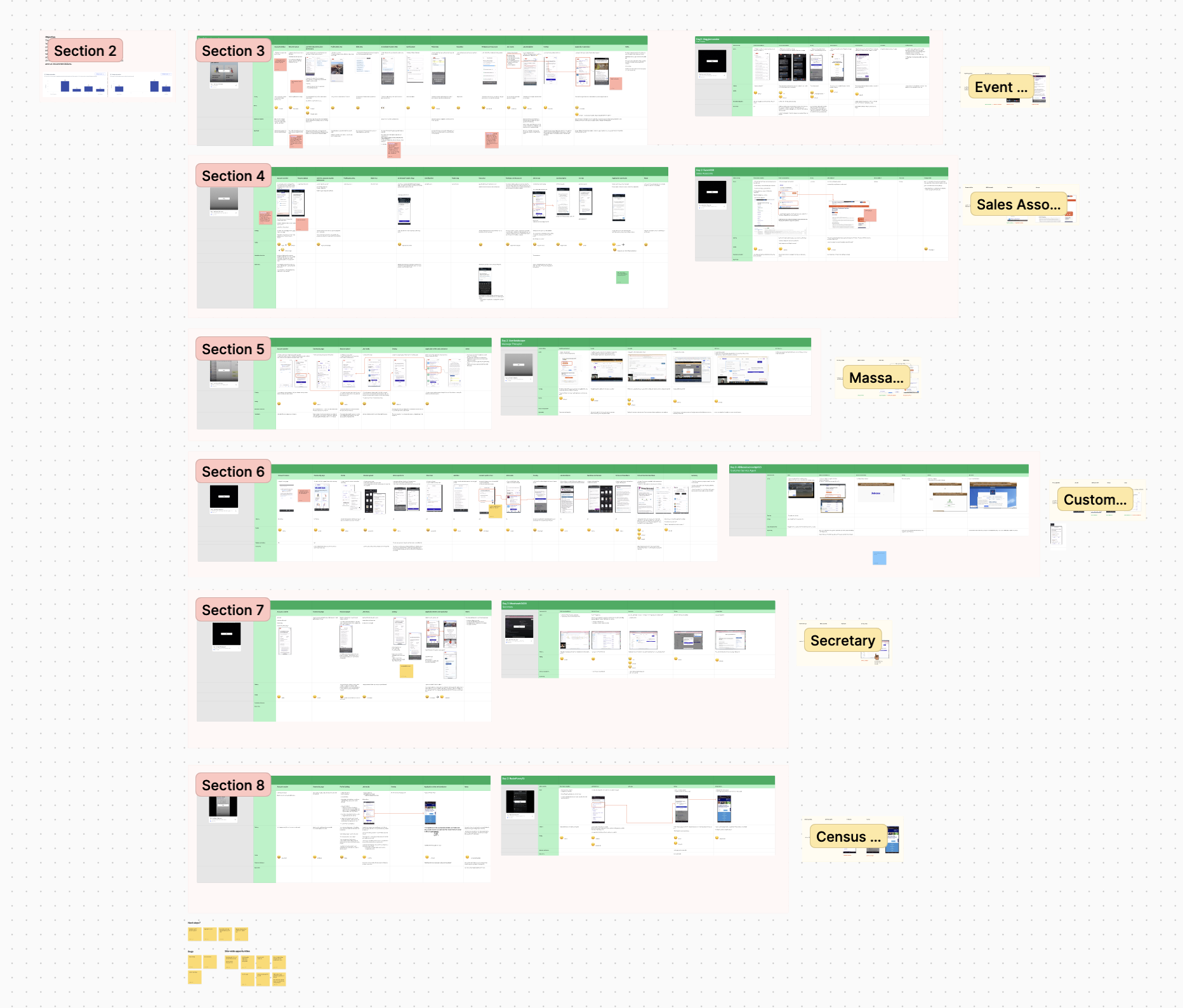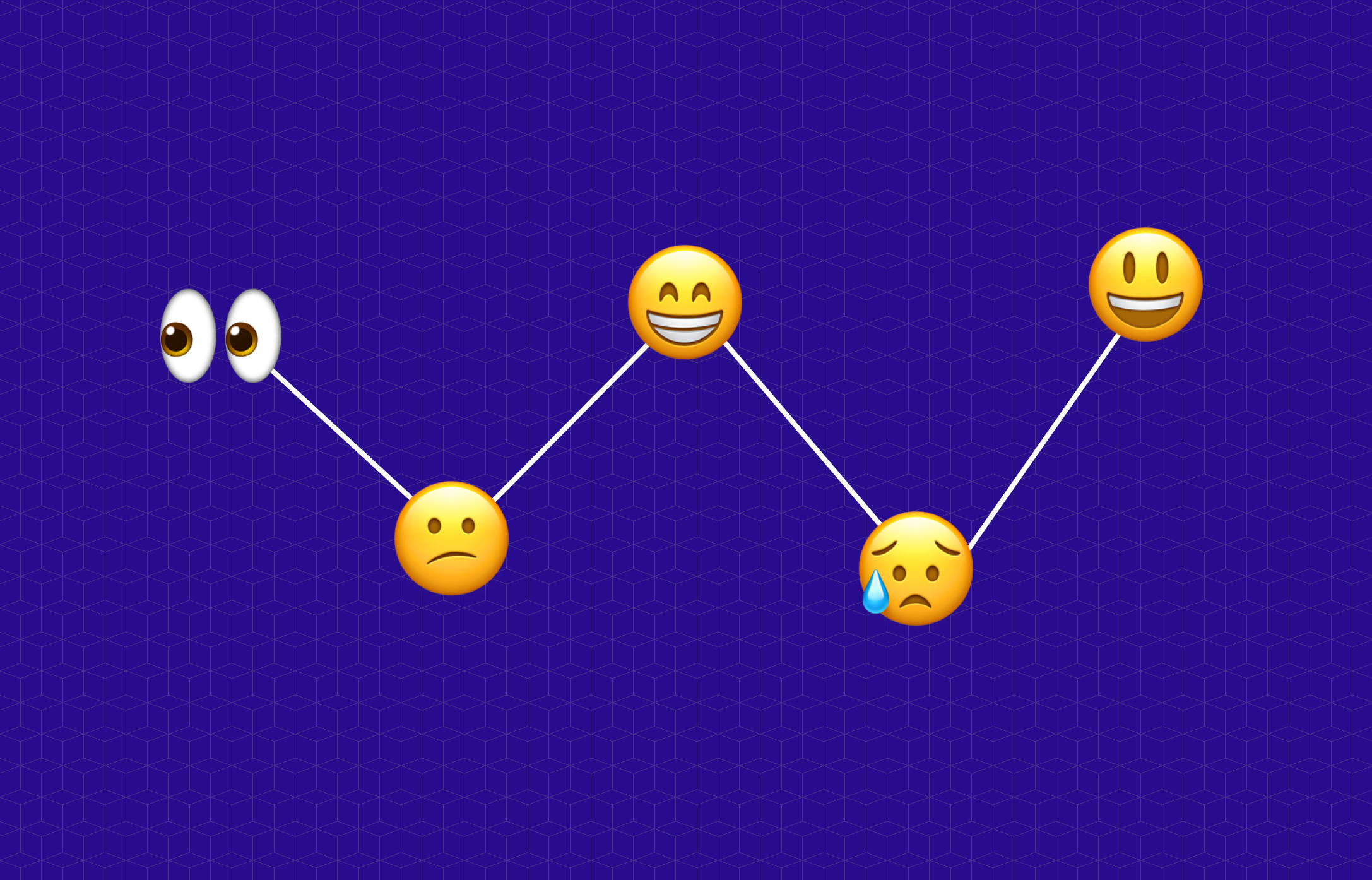Objective:
This research project aimed to analyze the post-application experience of 'high intent' new users on Jobcase by examining the usability and relevance of job recommendations and emails received in their inboxes. We sought to understand user interactions, perceptions, and satisfaction levels through usability testing. The study aimed to provide actionable insights to enhance user engagement and improve the relevance of recommendations.
Methodology:
Study Duration:
- 2 days
Participant Tasks:
- Day 1:
- Create a profile on Jobcase using their preferred method.
- Search for a job and apply for it.
- Day 2:
- Show their inbox and click on the email that interests them the most.
- Provide feedback on the relevance of the email content.
Participant Selection Criteria:
- Active job seekers who were planning to apply to a job that week.
Findings:
- Irrelevant Job Recommendations and Search Results:
- Numerous users reported receiving job recommendations and search results that were not relevant to their profiles or job searches. For example, a user with a profile indicating interest in IT received recommendations for retail positions.
- Various Bugs Throughout the Experience:
- Participants encountered several bugs, such as broken links, errors in loading job pages, and malfunctioning search filters.
- Clean Up and Remove Expired Job Listings from the SERP:
- Many users encountered expired job listings in the search results, causing frustration and diminishing trust in the platform.
- Null Location Instance:
- Instances where the job location was null or inaccurately displayed, affecting the job relevance and decision-making process for applicants.
- UX Opportunities:
- Make Less Confusing:
- Participants found the navigation and interface confusing. Simplifying the user interface could improve usability.
- Explore Functionality:
- Users suggested additional functionalities such as advanced search filters and job alerts customization.
- Make Less Confusing:
- Eliminate Bait and Switch Jobs:
- Users were frustrated with job postings that promised one role but linked to another less desirable position.
- Add Context Setting Loading Screen Between Jobcase and Partners:
- A loading screen with context-setting information would help users understand the transition between Jobcase and partner websites.
- Use Every Signal Captured by a User to Influence Recommended Jobs:
- Leveraging user signals (e.g., search history, profile information) to tailor job recommendations could significantly improve relevance.
- Consistent Landing After Sign-In:
- There was inconsistency in the landing pages after sign-in (e.g., "For You" vs. "Community"). Standardizing this could enhance user experience.
- Fix Overlay Logic and Design:
- Overlay designs were inconsistent and would benefit from a redesign for a more cohesive look.
- SMS Text Alert Opt-In Should Only Show Once to a User:
- Repeated SMS text alert opt-in prompts were annoying users. Limiting this prompt to once could improve the user experience.
- Job Suggestion Modal Logic Should Not Be Duplicative:
- Users experienced duplicate job suggestion modals, which was frustrating and redundant.
- Overlay Designs Look Inconsistent:
- The design of overlays lacked consistency, and a redesign could improve the visual coherence of the platform.
- Messaging and Overall Communication:
- Be Clearer About Why Users Are Seeing a Job in Their Email:
- Users were unclear why they received certain job recommendations, especially when the jobs were outside their qualifications. Providing context such as "Inspiration," "Stretch Role," "Career Pathing Opportunity," or "Exact Match" could improve understanding.
- Job Alert Emails:
- Job alert emails caused confusion, making users think the jobs listed below were the same type as the alerted job. Sorting the job list by relevance to the job type could improve clarity.
- Text Communications:
- Adding specific job titles to text communications and ensuring job relevance could improve the click-through rate (CTR) and user satisfaction.
- Be Clearer About Why Users Are Seeing a Job in Their Email:
Recommendations:
Based on the findings, the following recommendations are proposed to enhance the post-application experience for high intent users on Jobcase:
- Improve Job Recommendation Algorithms:
- Enhance algorithms to provide more relevant job recommendations based on user profiles and search history.
- Fix Bugs and Improve Site Stability:
- Address reported bugs and improve overall site stability to ensure a smooth user experience.
- Clean Up Expired Job Listings:
- Regularly update the job listings to remove expired postings and ensure the search results are current.
- Address Null Location Instances:
- Ensure accurate and complete location data for all job postings.
- Simplify User Interface:
- Redesign the interface to make navigation more intuitive and less confusing.
- Eliminate Bait and Switch Jobs:
- Implement stricter measures to ensure job postings accurately represent the positions being offered.
- Add Context Setting Loading Screens:
- Introduce loading screens that provide context when transitioning between Jobcase and partner sites.
- Leverage User Signals for Recommendations:
- Utilize all available user signals to tailor job recommendations more effectively.
- Standardize Post-Sign-In Landing Pages:
- Ensure consistency in the landing pages after users sign in.
- Redesign Overlays:
- Redesign overlays for consistency and improved user experience.
- Limit SMS Text Alert Opt-In Prompts:
- Reduce the frequency of SMS text alert opt-in prompts to once per user.
- Improve Job Suggestion Modal Logic:
- Refine modal logic to prevent duplication and enhance relevance.
- Enhance Messaging Clarity:
- Provide clear explanations for job recommendations in emails and improve the sorting of job lists by relevance.
- Enhance text communications by including specific job titles and ensuring the relevance of the job alerts.
By addressing these findings and implementing the recommendations, Jobcase can significantly improve the post-application experience for high intent users, leading to increased user satisfaction and engagement.
View the entire user journey in Figjam.


